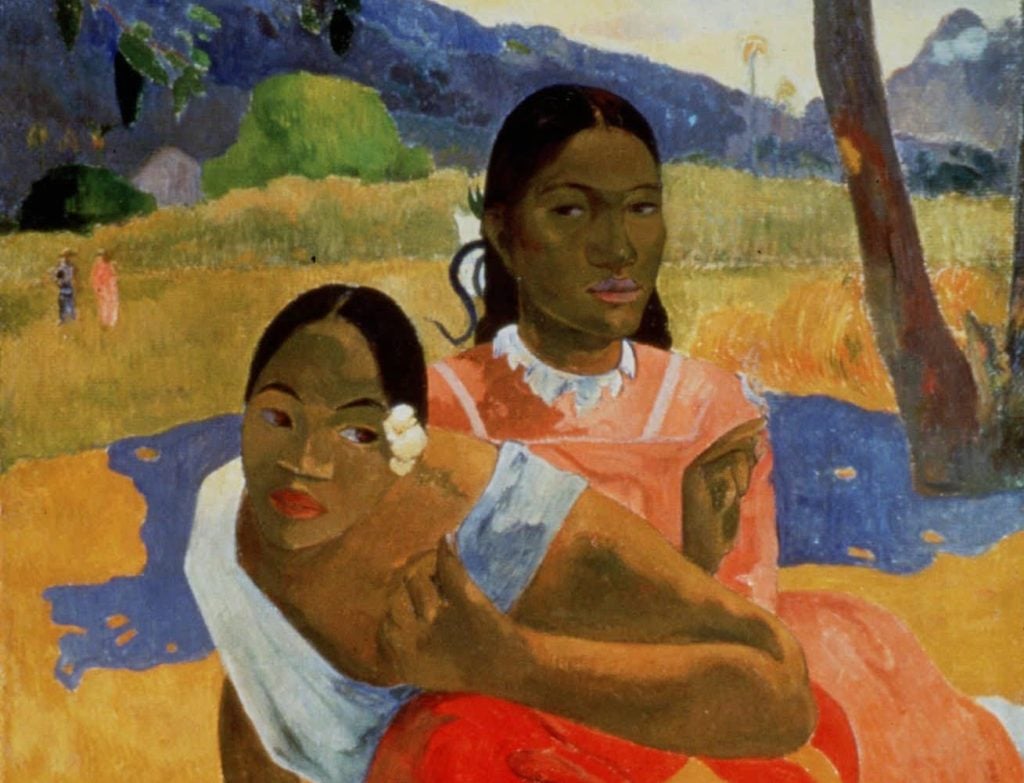Law & Politics
‘World’s Most Expensive Painting’ Actually Sold for $90 Million Less Than Reported: Suit
The Gauguin masterpiece reportedly sold for $210 million—not $300 million—and veteran art dealer Simon de Pury is suing for a commission.

The Gauguin masterpiece reportedly sold for $210 million—not $300 million—and veteran art dealer Simon de Pury is suing for a commission.

Eileen Kinsella

A legal battle in UK High Court has exposed formerly undisclosed details about a 2015 Paul Gauguin painting sale that at the time was billed as the most expensive artwork ever sold—reportedly for as much as $300 million.
But the suit, brought by art world impresario Simon de Pury—sometimes called the “Mick Jagger” of the auction world—has shed new light on the deal, including the years-long negotiation and actual sale price: $210 million, $90 million less than initially reported.

Simon de Pury, Michaela Neumeister
This would appear to leave Willem de Kooning’s Interchanged (1955) as the only painting to have ever sold for $300 million, as reported in early 2016 by Scott Reyburn in the New York Times. Citing market insiders, the report said the buyer was hedge fund manager Ken Griffin, the seller was David Geffen, and the transaction was part of a $500 million deal for two works.While a Griffin spokesperson confirmed the $500 million transaction, and the fact that it involved two works, she declined to specify individual prices, according to the report.
The next highest reported price was for Paul Cezanne’s The Card Players, which reportedly sold to Qatar for more than $250 million in early 2012, as the most expensive artwork ever sold, albeit privately. Public auction prices provide the only certified sale price for artworks, with the most expensive artwork ever recorded at auction being Pablo Picasso’s Les femmes d’Alger (Version ‘O’) (1955) which sold at Christie’s in May 2015 for $179.4 million.
De Pury and his wife Michaela are seeking a $10 million commission they say they are owed as part of a “gentleman’s agreement” for helping negotiate the sale.
The complaint was first reported in the Telegraph (June 29), which says that the $210 million sale happened after a series of meetings between de Pury and Guy Bennett, a former Christie’s Impressionist executive who now works for the Emir of Qatar as director of collections and acquisitions for the state’s museums.
Neither de Pury nor his attorney responded to artnet News request for comment by publication time.
De Pury and Bennett reportedly first met in 2012 to discuss a possible deal, for the work, titled Nafea faa ipoipo (When Will You Marry?) (1892), a study of two Tahitian girls. The work was owned by the family foundation of Rudolf Staechelin, a childhood friend of de Pury and a former Sotheby’s executive.
Citing court proceedings yesterday, the Telegraph reports that de Pury then approached Staechelin to gauge his interest in selling, at which time Staechelin told him he would not sell for less than $250 million. Negotiations stalled at that point but resumed in 2014, and the sale finally went through.
Staechelin, whose attorney had not responded to artnet News request for comment by publication time, says de Pury “lured him to the table by saying the Qataris were willing to pay $230 million,” which was a misrepresentation given that de Pury knew they would not go above $210 million, according to the Telegraph.
Staechelin’s counsel, John Wardell, is quoted as stating that there had been “a clear breach of fiduciary duty and all commission has been forfeited if any right ever existed.”
According to the report, de Pury claims he put the $230 million figure to Bennett but that the price was rejected because of the Qataris’ changing tastes. Further, the report says the $10 million commission was “never formalized but that is standard practice in the higher reaches of the art world.”
The painting had been in the Staechelin family for more than 100 years, the report says, and Staechelin claimed de Pury “pestered” him to sell the work to the Qatari family. De Pury reportedly told the court: “I never pester.”
Correction: A previous version of this story said the $250 million price paid for Cezanne’s The Card Players was the highest ever price reportedly paid for an artwork.